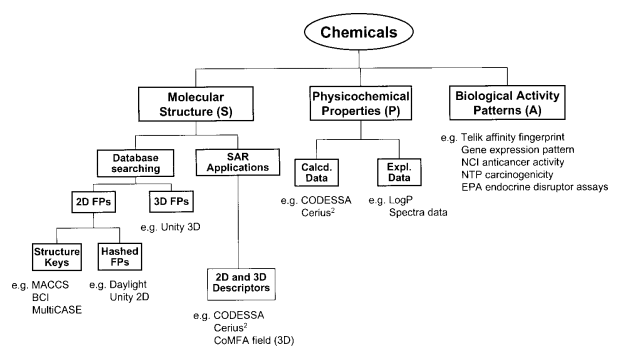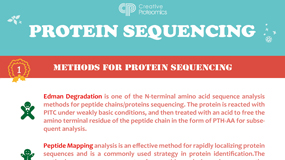- Service Details
- FAQ
What is Structure Activity Relationship
Structure Activity Relationship techniques are currently employed in a wide range of applications, including: In-silico design of virtual chemical libraries that explore molecular diversity for subsequent synthesis and screening; screening proprietary, commercially available, and public databases for lead discovery; and, mining gene expression data from microarray experiments for target identification. It is obvious from these examples that SAR technology now fulfills expanding roles in handling large and expanding sources of data. The analysis of SAR allows the detection of the functional group which has biological effect on the organism, which facilitates the modification of a bioactive compound by changing its chemical structure. Chemists use advanced techniques of chemical synthesis to introduce new chemical groups into the biomedical compound and test the effect of modifications on their biological functions. This method was refined to build mathematical relationships between the chemical structure and the biological activity, known as quantitative structure activity relationships (QSAR). The basic assumption underlying SAR analysis is that similar molecules have identical functions. The underlying problem is therefore how to define small differences on the molecular level, since each kind of activity, e.g. reaction ability, solubility, target activity, and may also related to another difference.
 Figure 1. Three level of approach to characterize chemical compounds
Figure 1. Three level of approach to characterize chemical compounds
Our SAR Services
Data Collection and Analysis
The foundation of effective SAR analysis lies in the meticulous collection and processing of experimental data. Our service begins with the aggregation of comprehensive datasets from a variety of sources, including literature, databases, and experimental results. We employ advanced data processing techniques to ensure the accuracy and relevance of the information, setting the stage for robust SAR analysis.
SAR Modeling
SAR modeling is the core of our analytical service. We employ several sophisticated modeling techniques to predict the biological activity of compounds:
- Quantitative SAR (QSAR) Modeling: This method quantifies the relationship between chemical structure and biological activity through statistical and computational models. QSAR models enable us to predict the activity of new compounds based on their molecular descriptors, facilitating the identification of promising drug candidates.
- Predictive Modeling and Simulations: Using state-of-the-art computational tools, we simulate the interactions between compounds and biological targets. This predictive capability allows us to anticipate how modifications to molecular structures may impact biological activity, guiding the design of more effective and safer drugs.
Molecular Design
Our SAR service extends to the design of novel compounds informed by SAR insights. By leveraging detailed SAR data, we guide the development of new molecular entities with optimized properties. This includes:
- Design of New Compounds: Based on SAR analysis, we propose modifications to existing compounds or design entirely new molecules with enhanced activity profiles.
- Structure-Based Drug Design (SBDD): Utilizing three-dimensional structural information of biological targets, we design compounds that fit precisely into the target's active site, thereby improving specificity and potency.
Validation and Optimization
The final step in our SAR service is the rigorous validation and optimization of models and compounds:
- Validation of SAR Models: We validate the predictive accuracy of SAR models through rigorous testing and comparison with experimental data, ensuring reliability and robustness.
- Optimization of Lead Compounds: Based on model predictions and experimental feedback, we refine lead compounds to enhance their activity, selectivity, and safety profiles. This iterative process is crucial for developing high-quality drug candidates.
Methodologies and Tools of SAR Analysis
Statistical Methods for SAR Analysis
Multiple Linear Regression (MLR): MLR is employed to correlate molecular descriptors with biological activity, providing a straightforward yet powerful tool for understanding and predicting compound efficacy.
Principal Component Analysis (PCA): PCA is used to reduce the dimensionality of complex datasets, helping to identify underlying patterns and relationships within SAR data. This method facilitates the visualization and interpretation of large-scale data.
Artificial Neural Networks (ANN): ANNs are utilized for their capacity to model complex, non-linear relationships between molecular structure and biological activity. By training these networks on SAR data, we enhance our ability to predict activity with high accuracy.
Support Vector Machine (SVM): SVM is employed for classification and regression tasks within SAR analysis. This method helps in distinguishing between active and inactive compounds and improving the precision of our predictive models.
Software and Tools for SAR
MATLAB and Python Libraries: For implementing and managing various statistical and machine learning models.
Specialized SAR Software: Tools like ChemDraw and MOE (Molecular Operating Environment) are used for molecular modeling, visualization, and analysis.
Benefits of Our SAR Service
- Accelerated Drug Discovery Process: By predicting the biological activity of compounds early in the development process, our SAR service accelerates the identification of viable drug candidates and reduces the time to market.
- Improved Compound Efficacy and Safety: Our detailed analysis and modeling ensure that compounds are optimized for both efficacy and safety, leading to more effective and safer drugs.
- Cost-Effective Research and Development: By identifying promising compounds and minimizing the need for extensive experimental testing, our SAR service reduces the overall cost of drug development.
Process of SAR Analysis
Initial Consultation: Understanding your specific needs and objectives.
Data Collection and Processing: Gathering and preparing relevant data.
SAR Modeling and Analysis: Applying advanced modeling techniques to interpret data.
Molecular Design and Optimization: Designing and refining compounds based on SAR insights.
Validation and Final Reporting: Validating models and providing comprehensive reports on findings.
All of the below are included in our report.
- Decipher SAR
- Detailed pharmacophores
- Key activity changes highted
- SAR data interpretation
- Effective 3D-QSAR models
- Virtually screen numbers of compounds on your desktop
- Molecules optimization to fulfill the ideal activity and suitable function
How to place an order

*If your organization requires signing of a confidentiality agreement, please contact us by email.
What types of data are used in SAR analysis?
SAR analysis relies on several types of data:
- Experimental Data: Includes biological activity assays, toxicity tests, and other empirical results obtained from lab experiments.
- Molecular Descriptors: Quantitative measures of molecular properties (e.g., molecular weight, hydrophobicity) that are used to describe the chemical structure of compounds.
- Structural Data: Detailed information about the 3D structure of compounds and their interactions with biological targets, often obtained from techniques like X-ray crystallography or NMR spectroscopy.
- Computational Data: Data generated from computational models and simulations that predict how molecular changes affect biological activity.
How do you ensure the quality and reliability of SAR models?
Rigorous Data Validation: We use high-quality, validated experimental data and molecular descriptors to build our models. This includes cross-referencing data from multiple sources and verifying the accuracy of experimental results.
Model Validation Techniques: We apply various validation techniques, such as cross-validation, external validation, and bootstrap methods, to test the robustness and generalizability of our models. This helps in identifying any overfitting issues and ensures that the model performs well on new, unseen data.
Regular Updates: We continuously update our models based on the latest research and technological advancements to incorporate new insights and improve predictive accuracy.
What are the limitations of SAR analysis?
While SAR analysis is a powerful tool, it does have limitations:
- Data Quality: The accuracy of SAR models heavily depends on the quality and completeness of the data used. Incomplete or noisy data can lead to unreliable predictions.
- Model Complexity: Complex models like ANNs or SVMs require significant computational resources and expertise to develop and interpret.
- Predictive Limitations: SAR models may not always capture all biological nuances, especially if the data does not fully represent the biological system being studied.
How long does it typically take to complete an SAR analysis?
The duration of SAR analysis varies depending on several factors:
- Scope and Complexity: The complexity of the data and the number of compounds analyzed can affect the timeline. More complex analyses or larger datasets generally require more time.
- Data Preparation: Time required for data collection, cleaning, and preprocessing.
- Model Development: Building, validating, and optimizing models can take from a few weeks to several months, depending on the methods used and the availability of computational resources.
Can SAR be applied to any type of compound or biological system?
SAR can be applied to a wide range of compounds, including:
- Small Molecules: Often used in drug discovery to identify and optimize potential therapeutic agents.
- Peptides and Proteins: For understanding and improving their interactions with biological targets.
- Natural Products: To modify and enhance the activity of compounds derived from natural sources.
How do SAR analyses integrate with other drug discovery processes?
Early Stage Optimization: SAR provides early insights into which compounds are likely to be successful, guiding the selection of candidates for further development. This helps streamline the drug discovery process by focusing resources on the most promising compounds.
Iterative Design: SAR data informs iterative cycles of compound design and testing. Insights gained from SAR analyses lead to modifications in molecular structures, which are then tested experimentally to refine and optimize drug candidates.
Collaborative Approach: SAR is often used in conjunction with other drug discovery techniques such as molecular docking, pharmacokinetics, and toxicity screening to provide a comprehensive understanding of compound behavior and interactions.
How does SAR analysis handle compounds with complex structures or multiple targets?
Advanced Modeling Techniques: For compounds with complex structures, we use sophisticated modeling techniques such as molecular dynamics simulations and advanced machine learning algorithms to capture the intricacies of molecular interactions and predict activity across multiple targets.
Target-Specific Models: Separate SAR models can be developed for different biological targets. This allows us to tailor the analysis to each specific target, enhancing the accuracy of predictions and facilitating the design of compounds that interact with multiple targets.
Comprehensive Data Integration: We integrate data from various sources, including structural data, biological assays, and computational predictions, to handle the complexity of multi-target interactions and provide a holistic view of compound activity.
What are the potential challenges in applying SAR to natural products or novel compounds?
Data Scarcity: Natural products and novel compounds may lack extensive historical data, making it difficult to establish reliable SAR models. In such cases, we use computational methods to generate descriptors and predictions based on available data.
Complex Chemistry: Natural products often have complex and unique chemical structures that may not fit standard SAR models. Advanced techniques such as molecular fingerprinting and custom modeling approaches are used to address these complexities.
Biological Variability: Natural products may exhibit variable biological activity due to their complex interactions with biological systems. We address this by using diverse experimental data and refining models to account for variability in biological responses.














